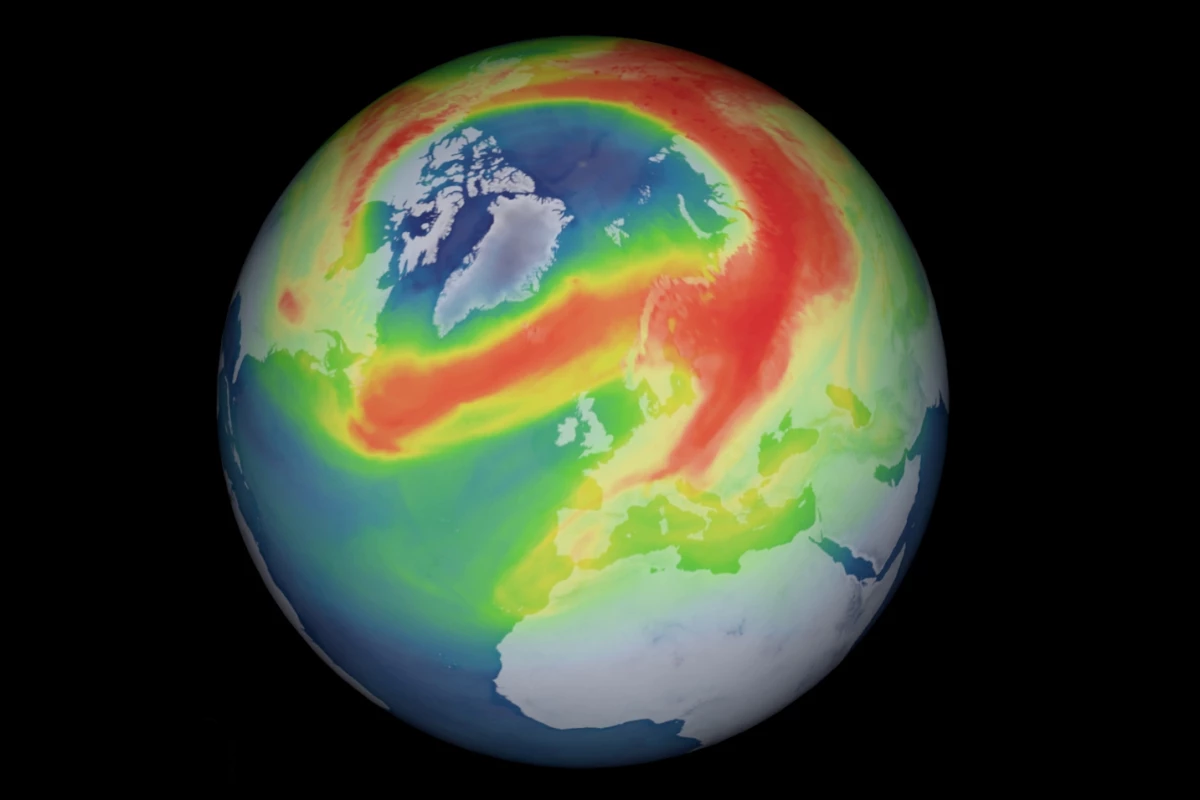Although a hole in the ozone layer might sound like a decidedly retro environmental issue, it’s still a problem today. Most eyes are fixed on the skies over Antarctica, but now scientists have spotted the biggest ozone layer hole in at least 25 years forming over the Arctic.
The ozone layer protects Earth from the worst of the Sun’s ultraviolet radiation, but in the 1980s a hole in this layer was discovered over Antarctica. The main culprit was found to be chlorofluorocarbons (CFCs), chemicals that were common in aerosols and refrigerants at the time. In response, the Montreal Protocol required countries to phase out CFCs, and the hole has been steadily shrinking for decades.
It’s not just a static hole, though – its size fluctuates with the seasons. It peaks in October, as Antarctica comes out of its winter and starts to warm up. The extra sunlight means more UV radiation, which combines with extremely cold temperatures, certain wind field patterns and lingering CFCs to kick off the depletion process once again.
The Arctic goes through a similar cycle, with ozone levels that fluctuate over the course of a year. But because temperatures don’t get quite as cold there as they do in Antarctica, there was never that serious a hole in the ozone layer around the North Pole. Until now, anyway.
Scientists from the German Aerospace Center have recently spotted an unusually strong drop in ozone levels over the Arctic. Since March 14, levels have plummeted to less than 220 Dobson Units, which constitutes an “ozone hole.”
The discovery was made using data gathered by the Tropomi instrument onboard ESA’s Copernicus Sentinel-5P satellite.
At its largest, this Arctic ozone hole extends over an area of almost one million km2 (400,000 mi2). That makes it the biggest seen there since continuous records began in 1995. That said, it’s still very small compared to the Antarctic ozone hole, which can reach sizes of 20 to 25 million km2 (7.7 to 9.7 million mi2).
The team says that this huge Arctic ozone loss is due to unusually strong winds trapping cold air inside the polar vortex at the North Pole. It won’t stick around for long though – the researchers say that it should heal itself by mid-April. Still, it’ll warrant further observation in case it becomes an annual occurrence. [Just when we were running low on things to worry about…!]
An animation of the changing ozone levels over the Arctic can be seen in the video below.
Ozone hole over the Arctic
Source: ESA
–
(For the source of this, and many other equally important articles, please visit: https://newatlas.com/environment/ozone-layer-hole-arctic/)









